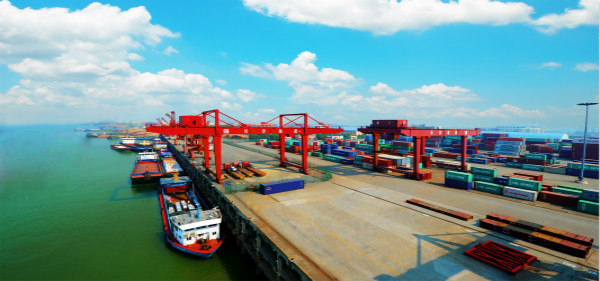Blue Sky Protection Campaign in Kaifu District
Since the three-year action of Blue Sky Protection Campaign, Kaifu District has presented a beautiful view of blue sky and clear water, adding a blue sky to the “Internet celebrity city Changsha”. Residents intuitively feel that there is no need to travel to take pictures, and we are just under the blue sky. The following set of official data provides evidence for this statement.
In 2017, the number of good days on Shaping and Wujialing sites in Kaifu District, Changsha City, were 263 and 245 respectively, with air quality rates of 75.8% and 68.6%. After three years of continuous efforts, Kaifu District has achieved remarkable results.
As of November 29, 2020, the number of good days on Shaping site was 308, with the city’s highest air quality rate of 92.2%, and its accumulative concentrations of PM2.5 and PM10 were 34 μg/m3 and 39 μg/m3, respectively, both ranking first in the city. That on Wujialing site was 302, with an air quality rate of 90.4%, ranking first in improvement degree.
Three years ago, Kaifu District launched a Blue Sky Protection Campaign against pollution with firm determination and measures.
Kaifu District has taken emission reduction as the starting point, made precise efforts and strengthened rectification to promote comprehensive prevention and control of air pollution in the past three years.
At present, Kaifu District has achieved good results, with significantly reduced pollution days and improved air quality.
01 Site Chief System
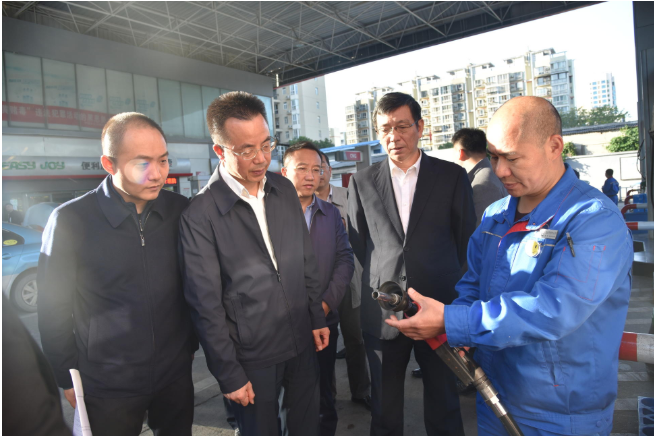
Cao Zaixing (second from left), Secretary of CPC Kaifu District Committee, supervises the special work of oil pollution prevention and control
“We must make every effort to control pollution with the strongest determination, discipline and style”, said Cao Zaixing, Secretary of CPC Kaifu District Committee.
Centering on 2 state-controlled sites and 17 small and micro sites, Kaifu District innovated and extended the Site Chief System. Cao Zaixing, Secretary of CPC Kaifu District Committee, and Xie Weifeng, the district chief, respectively served as the heads of Shaping and Wujialing state-controlled sites and they were the first responsible persons. The person chiefly in charge of each street served as the head of each small and micro sites. Through the above layout, a joint prevention and control mechanism for air pollution that promotes work in all areas by drawing upon the experience gained on key points was established. Moreover, a WeChat group of site chiefs was also formed for early warning and timely response. Within the group, real-time data of each site would be notified every hour. When the data value increases abnormally, the the site chief will schedule and deploy related works as soon as possible.
The Kaifu District Committee and Government made scientific plans and coordinated arrangements based on “Four Principles”. Firstly, Kaifu District adhered to the “Three Executions and Two Inspections” system. 21 county-level leaders took turns to lead the team in carrying out relevant tasks every day, and at least one problem was discovered and solved each time. Secondly, it adhered to the correspondence between posts and responsibilities, and established district, sub-district and community work organizations. The Blue Sky Office in Kaifu District mobilized 10 people to work together for department and street affairs, combined with the “Community Call” mechanism, and used community grid management to form a capable and professional team. Thirdly, the district put forward specific management and control recommendations based on the actual situation, and strengthened the working mechanism of weekly consultations, monthly scheduling, and quarterly reviews, so as to form a closed-loop management of daily inspections, notifications, rectifications within a time limit, and regular inspections. Fourthly, the district strengthened strict supervision and actual examination, as well as results-oriented quantitative responsibility assessment. It took the air quality of small and micro sites, problem rectification and law enforcement as the basic basis, and timely incorporated the implementation of special work and pollution source treatment into the scope of assessment of Blue Sky Protection Campaign. In addition, the district combined the “Three letters and Two Systems” (assignment letter, reminder letter, appointment letter, notification system, negative list system) to follow up on the performance of duties by various units and urge them to perform their responsibilities.
02 Practical results achieved through targeted efforts
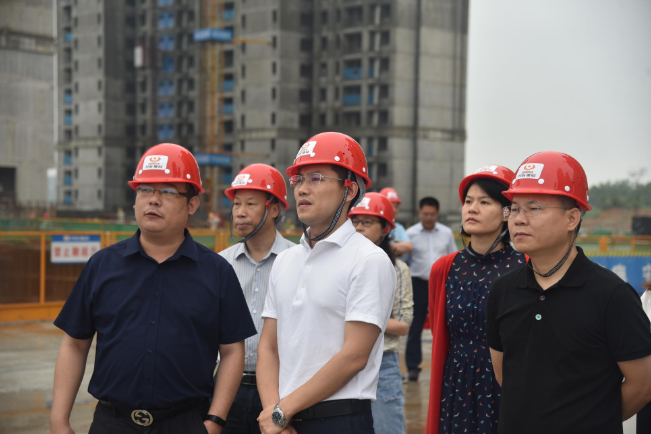
Xie Weifeng, Deputy Secretary of CPC Kaifu District Committee and the District Mayor(front row, middle) investigates the prevention and control of dust on the project site.
Only precise measures can address both symptoms and root causes. Kaifu District, focusing on emission reduction, comprehensively carried out pollution source remediation work, adopted the methods of inventory management and source governance, organized staff to go to residents’ houses to understand their situation according to the eight major categories of pollution sources, and set up standing books in different categories for management. A total of 1880 pollution sources were discovered. At the same time, the district made a “pollution source map” based on the situation. It carried out a comprehensive inspection and re-examination of 16 street pollution sources, issued 5 supervision notifications and assigned 256 problems, all of which have been solved. It is currently reviewing the pollution source treatment work to ensure that the problem does not recur.
In the past three years, Kaifu District has been problem-oriented and adopted precise governance methods under the guidance of “Six Controls and Ten Prohibitions”.
In terms of dust control, the district rectified construction sites and slag dust, adhered to all-weather inspection and control and real-time monitoring, and first installed an online dust monitoring system for construction sites above designated size.
A total of 1,672 flaws were discovered, and more than 2.3 million square meters of exposed loess was restored with grass seeds.
In terms of vehicle control, it investigated and failed more than 177,000 high-emission diesel vehicle breaches, and set up checkpoints to strictly investigate high-emission vehicles during special periods. It also completed the registration of 395 non-road mobile machinery and issued 145 sets of number plates.
In terms of smoke control, a total of 134 open-air barbecue and burning cases were dealt with and 18,263 oil fume purification equipment were installed in the homes of residents of the old communities, with 3263 sets of equipment overfilled.
In terms of emission control, the district identified 57 VOCs-related industrial enterprises in key industries, cleared and rectified 14 polluted enterprises, and closed 27 unlicensed paint booths in accordance with the law. It banned the paint business in the district, took the lead in renovating 156 low-nitrogen boilers, and subsidized 16.267 million yuan.
In terms of coal control, the district carried out 1,806 special fire coal rectification actions, banned more than 10 illegal fire coal production sites, and confiscated and destroyed 6,565 coal stoves. It launched pilot projects to explore humanized coal control measures such as replacing earth coal stoves with gas ones, and first realized that there were no restaurants in no coal areas to use coal stoves.
In terms of oil control, the district was the first to establish a district-level monitoring platform in the city, and over-fulfilled the online monitoring and construction tasks of oil and gas recycle of 11 gas stations. It implemented “Daily Inspection” on oil and gas recycle at 31 gas stations, carried out 19 actions against illegal operation of diesel, banned 5 illegal operations, confiscated 106.93 tons of diesel, filed 6 cases, and detained 1 person.
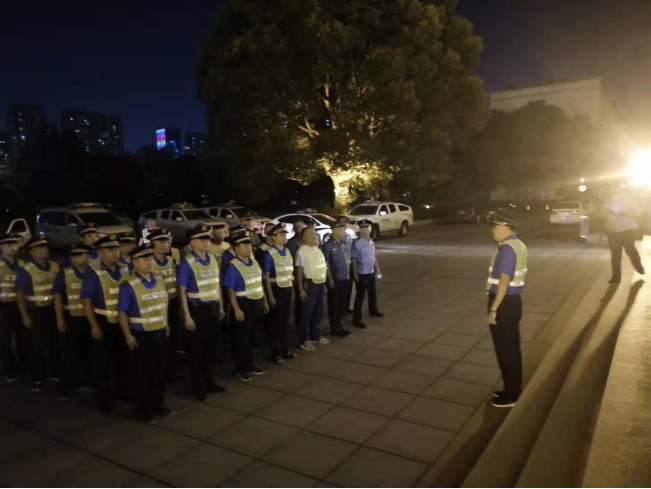
Mobilization and deployment before actions
Over the past three years, Kaifu District has focused on key areas and industries and promoted the formation of a new pattern of scientific pollution control. On one hand, based on the geographical boundaries, Kaifu District set up 2 strictly-controlled areas and 5 fixed checkpoints, and arranged 24-hour shifts to control the high emission vehicles. It also strictly controlled catering oil fume, auto repair and high-emission vehicles around the sites, carried out a total of 270 unannounced inspections and assigned 879 issues, thereby reducing the number of catering stores around the state-controlled sites, and basically eliminating the illegal paint-baking of auto repairs, the use of high-emission vehicles beyond the range and excessive emissions. On the other hand, the district established a closed loop of the whole process of pre-judgment and early warning, emergency management and control, supervision and evaluation. When it is on the verge of polluted weather, the Blue Sky Office will issue emergency management and control instructions in time, and the responsible departments will immediately activate the early warning mechanism. Since 2020, a total of 29 good days with an air quality index of 95 to100 have been achieved. Traffic police, urban management, environmental protection and other departments jointly inspected the exhaust gas emission of high-emission vehicles.
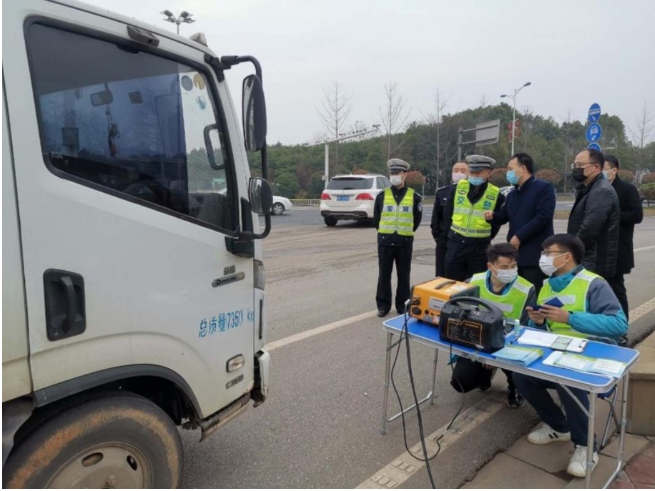
In addition to mobilized task forces, Kaifu District also used technologies to greatly enhance its pollution prevention and control capabilities with science and technology. The navigating monitoring vehicle is a “magic weapon” for pollution investigation that was put into use in Changsha for the first time in Kaifu District in May 2018. In addition, the district also comprehensively utilized a variety of methods, such as multifunctional dust suppression vehicles, unmanned aerial vehicles and satellite remote sensing analysis, to build a three-dimensional monitoring network, analyze the trend of air pollution sources in real time and propose targeted suggestions, so as to improve and guarantee the air quality in Kaifu District. At the same time, online monitoring systems such as construction site dust, catering oil fume, oil and gas recycle, and smart slag management played an important role. When the pollutant concentration data is abnormal, the staff can quickly obtain information through the monitoring screen and then locate and deal with it according to the distribution of pollution sources.
03 Concerted efforts
Kaifu District has always regarded “Ecology First” as the primary principle of development, strictly implemented the concept of green development, and paid attention to publicity and guidance while carrying out pollution prevention and control work.
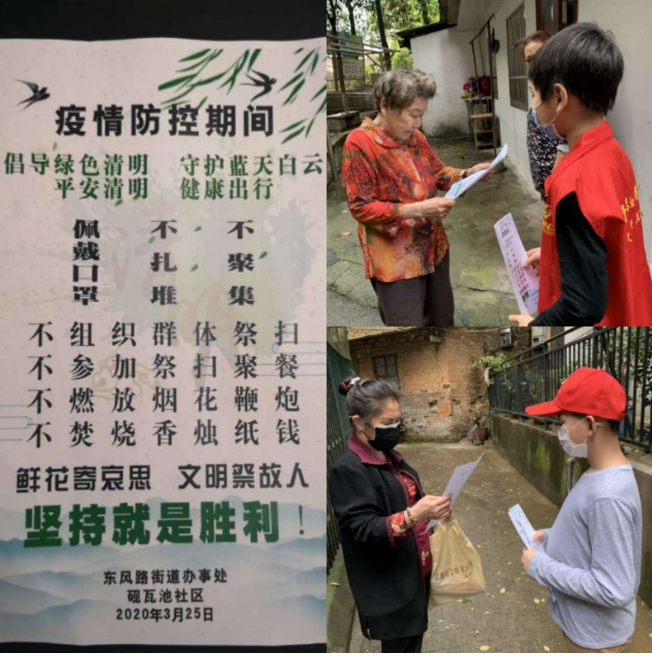
During the epidemic, volunteers promoted to sacrifice in a civilized way on Tomb-Sweeping Day.
The first is to strengthen public opinion-based publicity. The district carried out activities in 55 party branches, and convened returned scholars and university professors to carry out thematic salons, thereby expanding the team of environmental protection volunteers and mobilizing people from all levels to participate in the campaign. Aiming at key periods such as Tomb-Sweeping Day and Ghost Festival, the district actively carried out publicity activities for civilized sacrifices, combined with party building activities and classroom teaching to vigorously advocate the cadres and masses to make sacrifices in a civilized and smoke-free manner, and guide the public to adopt a low-carbon, environment-friendly, civilized and healthy lifestyle, instead of burning ghost money and setting off firecrackers.
The second is to set good and bad examples. For topics, like construction site dust prevention, the promotion of raw and auxiliary materials with low volatile organic content, ozone pollution prevention and control, and particulate matter control during the special periods, the district adopted various forms such as lectures by experts, on-site observations, and cross-checks, to increase enterprises’ understanding of new policies, standards and requirements for air pollution prevention and control, and actively promoted new technologies, techniques, materials and equipment, so as to continuously improve their awareness and level of green and scientific production, and guide enterprises to do a good job in pollution prevention and control from the details. At the same time, it also strengthened the guidance of news and public opinion. It cooperated with mainstream media to clarify the direction, set advanced models, “expose” unqualified companies, and create a good atmosphere in which companies in the district do not dare or do not want to violate the rules.
The third is to mobilize the masses to strengthen publicity. The district carried out grid-based publicity, went to the streets and alleys and mobilized industry enterprises, community properties, and residents to participate in the campaign through environmental protection lectures, mobilization oaths, outdoor activities, and commitments. During the fight against the epidemic, the staff of streets and communities acted as both “inspector” and “propagandist”, and distributed more than 200,000 copies about the prohibition and restriction of fireworks and firecrackers and cooking fumes. Moreover, the district also held environmental protection themed practice activities and appraisal activities for three consecutive years, commending outstanding volunteers and enterprises for environmental protection.
In the past three years, the district has broadcast slogans and videos for more than 120,000 times, published more than 3,800 reports, held more than 1,500 publicity activities, and distributed 1.5 million publicity materials, thus forming a joint force of air pollution prevention and control led by the government with the participation of enterprises and the public, and making everybody a participant, monitor and beneficiary of the Blue Sky Protection Campaign.
Blue Sky Protection Campaign is not only a short-term fight to overcome difficulties, but also a long-term task of governance. Over the past three years, Kaifu District has continuously improved the top-level design, clarified responsibilities, implemented measures for pollution control, and consolidated the results, thus creating the clear water and blue sky. With the fresh air and blue sky, people now live a happy life in Kaifu District.
Edited by Wang Liang

 Print
Print

